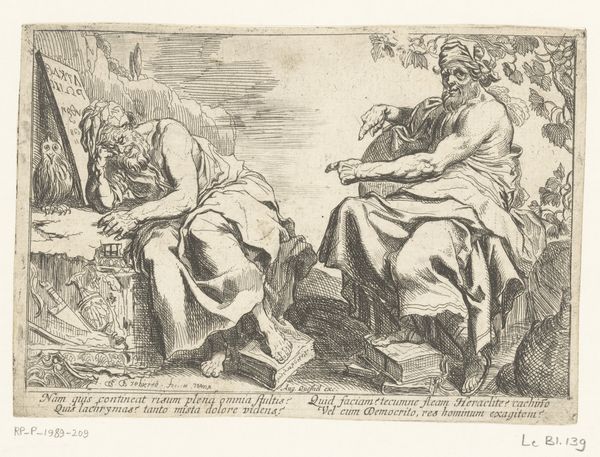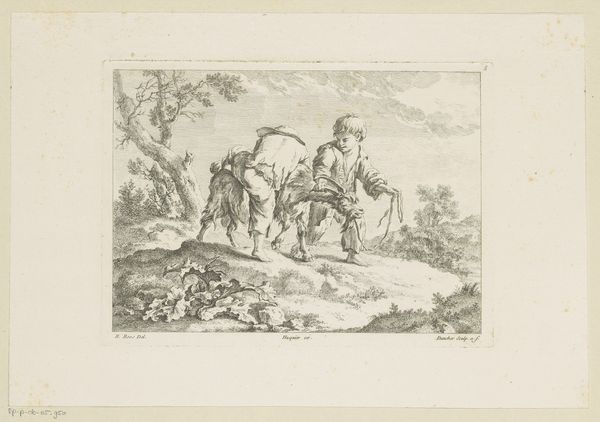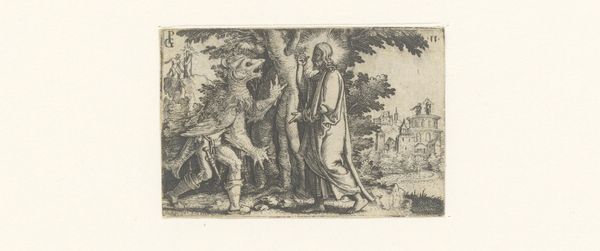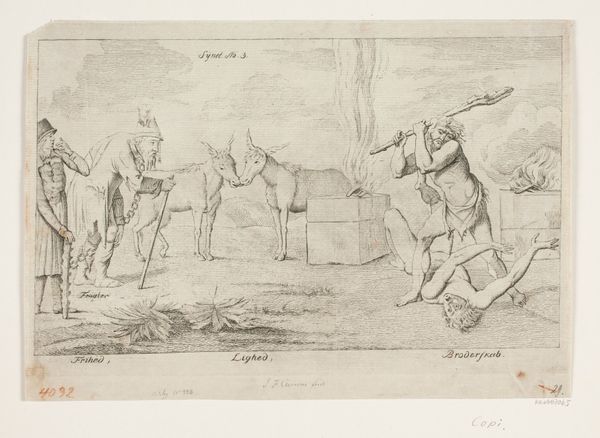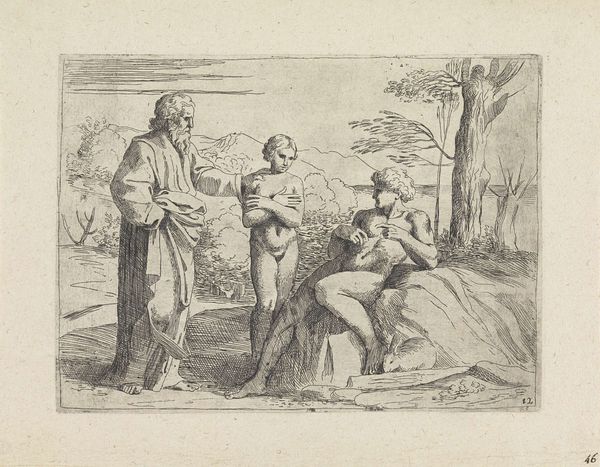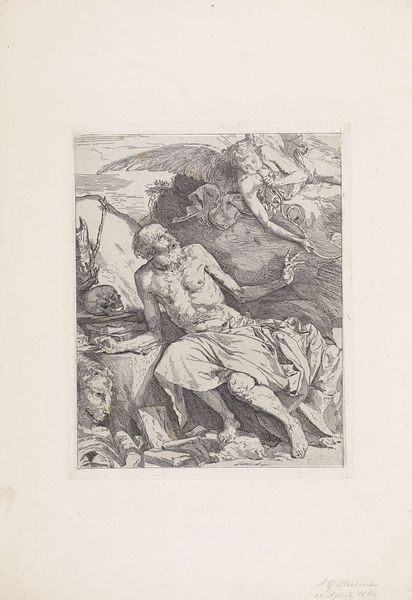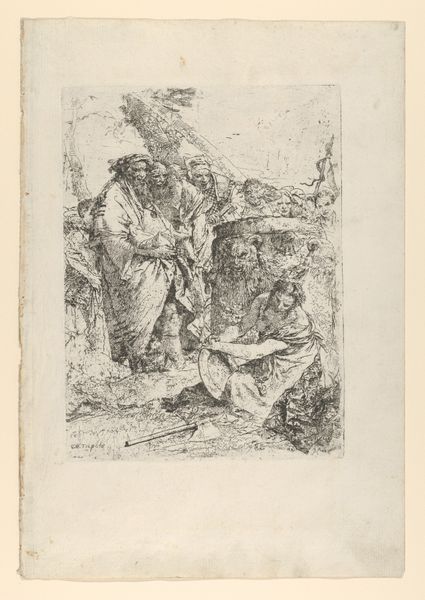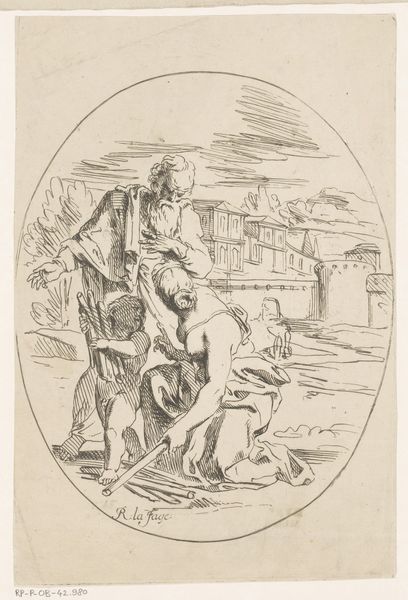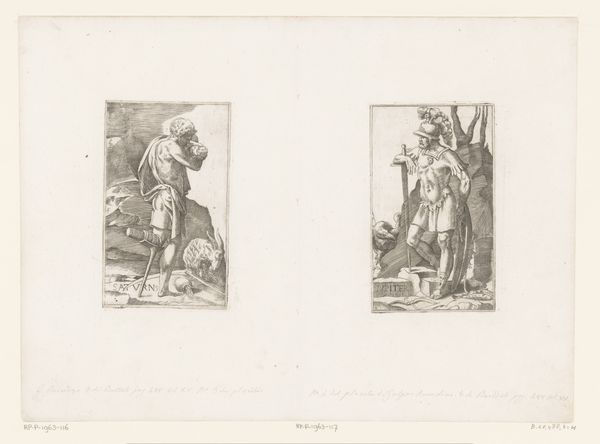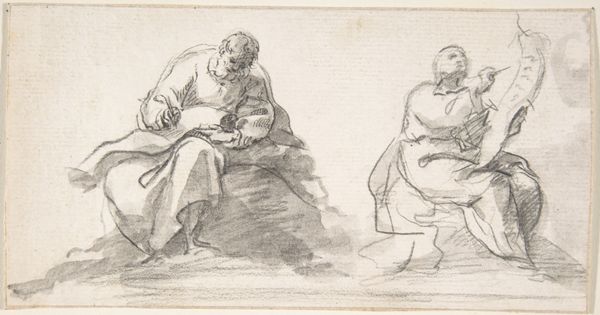
engraving
#
baroque
#
pencil sketch
#
old engraving style
#
landscape
#
figuration
#
history-painting
#
engraving
Dimensions: height 81 mm, width 111 mm
Copyright: Rijks Museum: Open Domain
Curator: This somber scene strikes me immediately, a kind of stoic weightiness despite its small scale. Editor: Indeed. This is "Three Greeks, a Bay with Ships in the Background," an engraving by Johann Wilhelm Baur, dating back to 1636. Let's delve into the image's formal structure. Notice how the composition is distinctly divided: on one side we have a seated group, weighed down, literally and figuratively. Opposite them, a lone figure walks with what appears to be self-possession towards the bustling bay. Curator: That very division speaks volumes, doesn't it? But before getting caught in abstract reflections, I want to consider the tangible side of this artwork: Baur employed engraving, a painstaking process of carving lines into a metal plate to render his design. We must not overlook that labor! This wasn't painting or drawing but a method demanding immense physical input, revealing a commitment to his materials that goes unnoticed by many modern eyes. Editor: Valid point, but that craftsmanship serves Baur’s intention to create depth, as you will see in the cross-hatching. In structural terms, the composition and the tonal variations of the print create strong diagonals that pull the viewer's gaze around the scene, enhancing the dynamism. Semiotically, this directional emphasis imbues the Greek figures with motion. Curator: Yet that supposed motion exists only in stark contrast to the reality of those ancient Greeks, rendered so plainly: Their clothes are tattered and their bearing communicates anything but power. Baur surely knew how images work as tools, how representations of the defeated could still communicate powerful stories to his 17th century viewers. We must consider the market this artwork was meant for: likely a printed edition sold to consumers. Editor: But doesn't the artist also play with classical tropes here? Even if we interpret the men as downtrodden, their costumes and beards root them in antiquity. The landscape is stylized but evocative, fitting into a tradition of idealized, historic painting. The materiality is simply the vessel of classical themes. Curator: Still, every carefully wrought line on that plate, every print sold is a result of intense production. Considering that process allows a glimpse into the economic realities behind Baur's production. In examining process, we engage directly with its making. Editor: I grant you, examining Baur’s process can unlock layers of meaning within this historical piece. Curator: Yes, understanding how labor intersects with artistic intention makes this piece even richer.
Comments
No comments
Be the first to comment and join the conversation on the ultimate creative platform.
